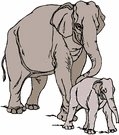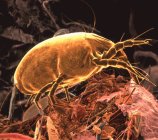
Worksheets and No Prep Teaching Resources
Reading Comprehension Worksheets
Animal Themes
Invertebrates

Animal Themes
 Worksheets and No Prep Teaching Resources Reading Comprehension Worksheets Animal Themes Invertebrates |
 Animal Themes |
| edHelper's suggested reading level: | grades 6 to 8 | |
| Flesch-Kincaid grade level: | 7.69 |
|
Dust Mites
By Vickie Chao |

|
 1 Were you ever afraid of what was lurking in the dark when your parents kissed you good night, switched off the light, and shut the bedroom door behind them? If you were not, you should be - starting right now! No, we are not talking about big, scary monsters with sharp teeth and red eyes hidden in your closet or underneath your bed. We are talking about something so small that you cannot even see it with the naked eye. That something is called the dust mite.
1 Were you ever afraid of what was lurking in the dark when your parents kissed you good night, switched off the light, and shut the bedroom door behind them? If you were not, you should be - starting right now! No, we are not talking about big, scary monsters with sharp teeth and red eyes hidden in your closet or underneath your bed. We are talking about something so small that you cannot even see it with the naked eye. That something is called the dust mite. |
Create Weekly Reading Books
Prepare for an entire week at once! |
| Leave your feedback on Dust Mites (use this link if you found an error in the story) |
 |
Animal Themes
|
 |
Invertebrates
|
|
|